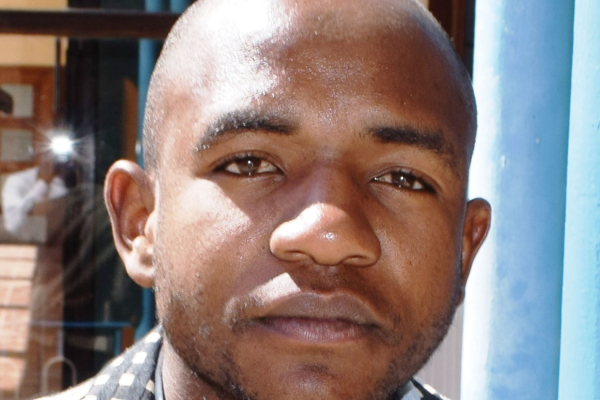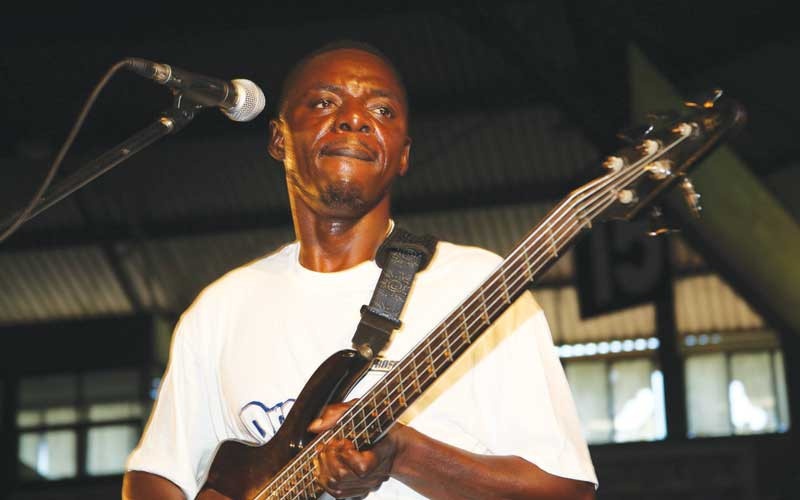
THE text Stained Earth is a concrete case study that unravels the repercussions of carrying a differing thought in the time of blooming conflict.
Beniah Munengwa
Title: Stained Earth Author: Derek Huggins ISBN: 1 77922 032 4 Publisher: Weaver Press (2004)
Whilst the major preoccupation of the text is the narration of the war experience through raw eyes, the author proceeds to allocate his condemnatory voice to acts of war that are void of an association with reason.
It explores the colonial period well, depicting the conflict that existed between the humane colonial force and the inhumane segment which happened to be larger and always dominant and how silent laws always pushed towards the extermination of opposition.
War is defined as one thing that constitutes the battle of and for minds and hearts that leaves no-one unaffected and well.
It is an agent that invites death to the doorway. As in Chenjerai Hove’s two poems, War Torn Wife and War-Time Wife, war is proven to be an unnecessary indulgence that leaves every nut of society unbolted.
Huggins’ Stained Earth is an attempt to inject reason into a troubled humanity towards one end of levelling and erasing racial and ideological stains.
- Chamisa under fire over US$120K donation
- Mavhunga puts DeMbare into Chibuku quarterfinals
- Pension funds bet on Cabora Bassa oilfields
- Councils defy govt fire tender directive
Keep Reading
The situation that strikes me the most is the point at which characters with differing ideological standpoints are left at the mercy of those with a majority thought.
Exploring the formulation of faction and divergent thought, Madison describes this situation as a point whereby the majority are allowed to exercise their tyranny, simply because of the power that they attain from their numbers. The text unravels the total helplessness of the ordinary person caught in-between conflict zones and used as pawns serving the larger projections of war or the violation of freedom.
The farmer in The Sellout is exposed to the wrath of black freedom fighters for he is labelled a sellout simply because he does not want to be associated with them and that he employs western modes of farming.
This scenario is also emergent in Stanley Nyamfukudza’s The Non-Belivers Journey, whereby the advocacy for the use of western modes of farming is amounted to the initiation to the process that culminates into torture and death by from one’s own.
Sacrificial son of the soil presents the case of the existence of faultlines in terms of the acceptance of the gospel of mobilisation.
Though deemed by populist sentiment as the ideal, Takundwa’s father is not in agreement with the conscription of his son into the army, a cause that serves none of his immediate concerns.
As part of seeking refugee, he approaches the Rhodesian forces in the same way the farmer does in the story, The Sellout.
The story, however, ends on a tragic note, as Takundwa is sentenced to nine months in jail by the Rhodesian court and his father is killed by the freedom fighters for being a sellout to the cause.
Scenarios like these are what constitutes the pattern of Stanyon’s multiple revelations emergent in the anthology. This form of instituting punishment to those who stand for their moral and gut feelings is not only existent on the ground where the native African stands, but is equally experienced on the Caucasian’s side.
One major strength of Huggins’ writing is that, he like Athol Fugard and Doris Lessing attempt to cross the border of race to explore the issues of the day.
The story Sent to Coventry is critical in two ways. One way is that it reveals how people get compelled to bypass their moral standing all for the sake of fitting in. On the other side, it exposes the barbaric side of the white race.
Richards is persecuted for standing for what is right; something that’s on the other side deemed as treacherous and full of betrayal and unmanly.
But Huggins’ presentation of situations carry with them a deep-seated stereotype as he concentrates on demoting the positive acts done by “freedom fighters” and in the end painting them as mostly looters and villain mongers.
However, one lesson that I can broadcast from my reading of Huggins’ work is the purposeful art of condoning peace against the backdrop of a close relationship with conflict and a closeness to tragic ends.
Life as it happens also demands one who lives in it to table out effective manoeuvrability skills so as to survive.
Reason and jotting down plans can help one to survive political whirlwinds which usually are accompanied by death on their sleeves.
Calculating the enemy’s programme and the way he plays the game ensure survival, unlike when one instinctively goes through war, conflict and disaster led by a blind following of his blinded intuition, heart and mind.
It is compulsory for one to establish a belonging, either for him to gain material gain or rather at least to make him safe from persecution which seem inevitable in a country with immature political landscapes.
On the level of narration, the story pieces begin with a short description that formulate an introduction to the background that inspire the story and also a conclusion, all of which stand as partially independent from the flesh of the story to make his writing pieces of quasi-realistic stories.
Huggins acknowledges that Stained Earth is a book written with the help of Yvonne Vera.
Handpicked from oral tradition, Huggins retells parts he deemed important for serving the purpose of clarifying the effects of war and also the implications of not being accommodative to varying thoughts.
Whilst it is an outstanding book at the level of painting the image of the annihilation of people, it, however, does not make an enjoyable read for the seriousness of the subject amalgamated with the acuteness of the author’s realism slows the read and hammers the emotional tendons of the being.
Huggins is an Englishman and was a British South Africa Police officer and is the man behind the opening of Gallery Delta, a place for the promotion of contemporary painting.
Whilst the book has unlikely mistakes in punctuation, it remains a book that carries realities that are a part of the colonial legacy, on either side of the race divide, all of which can be useful in drawing lessons from our past as we move forward.











